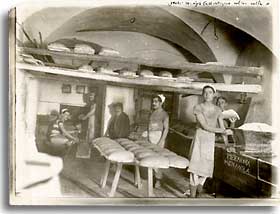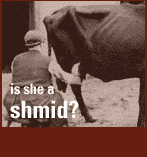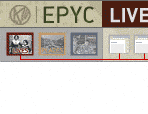



Shabes - The Seventh Day: Rest
Shabes (Yiddish), Shabbat (Hebrew), begins at sundown every Friday night, and continues through nightfall on Saturday. Commemorating the six days of divine creation, the seventh day was commanded as a day of rest. To keep within this spirit, no activity construed as "work" is accepted for the Sabbath. Definitions of "work" include, most significantly, food preparation, as it usually begins with the prohibitions against starting any fire (including electricity). The Sabbath's prayers and learning are organized around three meals (Friday night, Saturday afternoon and early evening- shaleshudes) all of which must be prepared before nightfall on Friday. The traditional Shabes foods emerged from creative exploration within these guidelines.
The Sabbath is the strongest, most distinct Jewish double pillar of ritual and folklore. This holy rest day evokes each week the creation of the world, and fosters a special consciousness expressed by sanctifying the foodstuff extracted from this created world. While detailed traditions around the Sabbath may have been forgotten by some, including the special Shabes meals , which are accompanied by blessings and songs, the spirit of the day has remained as a central tenet of Jewish tradition with its special food characteristics. The most central parts are:
Wine and Challah
First and foremost is the wine for the Kiddush (blessing, in Hebrew) and the challot - the two braided breads that grace every Shabes table. Jews took with them their tradition of using this ritual bread wherever they moved, and Poland was no exception. Often, the dough was kneaded on Thursday or very early on Friday, left to rise, and then baked before the Sabbath.
















